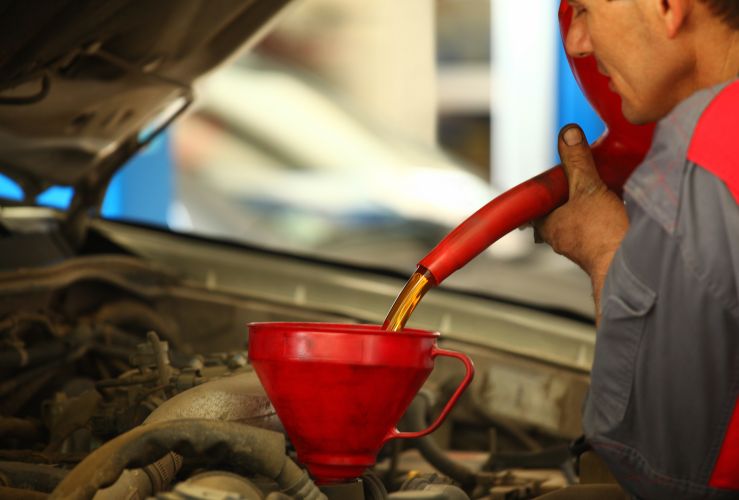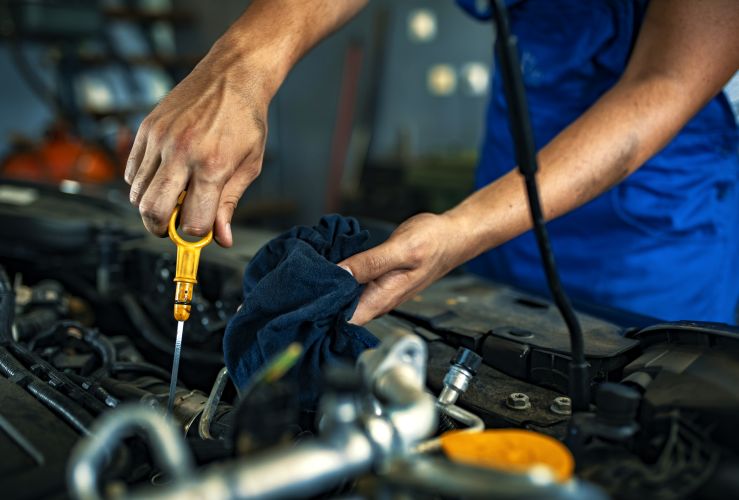Why is engine oil so important for your car?
Oil is essential to ensure your car's engine works smoothly and effectively.
Its main function is to lubricate the engine's internal moving parts, but it also helps cool the engine by evenly distributing heat.
Additionally, many oils contain additives that clean the engine, while also preventing or reducing corrosion, and optimising sealing.
Why is it important to use the right engine oil?
It is important to buy the correct oil for your car.
Every oil product on the market has a certain grade/viscosity and specification.

What is viscosity in relation to oil?
Viscosity in relation to engine oil refers to how easily it pours at certain temperatures.
A thin oil is one that has a lower viscosity, pouring more easily at lower temperatures than thicker oils, which have a higher viscosity.
Thin oils: minimise engine friction and help ensure it can start in cold temperatures.
Thick oils: More effective at maintaining film strength and oil pressure at high temperatures and under heavy loads.
How car engine oils are labelled
Engine oils are labelled in relation to their viscosity, using the classification XW-XX (e.g. 5W-30).
Figure proceeding the W
The figure preceding the W (which stands for winter) relates to the viscosity at zero degrees Fahrenheit (minus 17.8 degrees Celsius).
A low figure means the oil thickens less in low temperatures.
Figures following the W
The figures following XW relate to the oil's viscosity at 100 degrees Celsius and relate to the resistance of the oil to thickening at higher temperatures.
What oil do I need?
Motorists that live in colder climates will find their car engine benefits from a lower viscosity oil.
For those in warmer climates, or for summertime, it's better to add an oil with a higher viscosity at 100 degrees Celsius.
Oil type check
Vehicle handbook
Your handbook will detail which oil is required for your vehicle.
Check online
If you've lost your handbook, there are a number of online resources you can use to find out which oil you need for your car, such as the Castrol oil checker (see list below).
Simply enter the make, model and variant of your car to find out what type of oil you need.
Some search engines may also ask other details, such as how frequently you drive your car.
Why is it important to buy the right oil for your car?
Your car's engine was designed to be used with a specific type of oil.
This specification of oil will help keep your engine running well for as long as possible, so it’s important to use the right oil for your car.
Resources for finding out which oil you need for your car
If you cannot locate your handbook, you may be able to find a digital version online. However, it is probably easier to use an online resource to find out which oil you need for your car, such as those listed below:
https://www.total.co.uk/lub-advisor
https://www.halfords.com/motoring/engine-oils-fluids/engine-oil
https://www.eurocarparts.com/engine-oils
Checking and topping up your car engine oil

Your car's oil should be checked regularly and topped up as required.
How do you check your car engine oil?
To check your car engine oil levels:
- Park your car on level ground (so you get an accurate oil level reading) and ensure the engine is off and cooled down.
- Open the bonnet, then pull the dipstick out. Wipe it clean with a cloth or rag.
- Keeping the dipstick straight, re-insert it into the dipstick pipe.
- Take out the dipstick once again and look for the ‘min’ (minimum) and ‘max’ (maximum) lines. If the oil level is below the 'min'
How much oil does my car need?
The amount of oil your car needs depends on the make, model, and year of your vehicle.
The easiest way of finding out how much your car needs is to read the owner’s manual.
If you are simply topping up your car’s current oil, put a little in at a time, re-checking the dipstick as you go.
How to put oil in the car
- Look for the oil filler cap (marked with an oil can). It should be located near the engine and dipstick.
- Top up the oil tank with a little oil, doing so slowly and carefully.
- Each time you put a little more oil in, re-check the dipstick. Get the oil level as close to the ‘max' mark without going over it.
- When finished, screw the oil cap back on securely; re-insert the dipstick.




